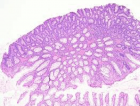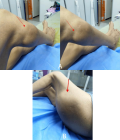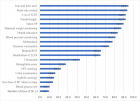Abstract
Mini Review
Fungi present in home and their impact on human health-A short review
Mariusz Dyląg*
Published: 06 June, 2017 | Volume 1 - Issue 1 | Pages: 016-025
It is estimated that even up to 30% of buildings worldwide may be the subject of complaints connected with the quality of indoor air. Potential sources of air pollution can be both organic and inorganic particles. This article focuses on biological air pollutants from living and dead biological sources, especially those connected with fungi. Fungi found in the indoor air of domestic dwellings in a large extent are similar in their species composition to those found on the outside of the building. Microorganisms enters into the buildings during the airing of rooms or through the different slots and can develop on the surfaces of various materials. Intensively develops in a poorly ventilated, damp and dusty environments. For this reason the exposure to the indoor air pollution might be stranger for inhabitants than the expose to the impurities of the outdoor air. Presence of fungi in domestic dwellings can be very danger because of most often is associated with allergic reactions, mycotoxins, volatile organic compounds or even with fungal infections.
Read Full Article HTML DOI: 10.29328/journal.hjbm.1001003 Cite this Article Read Full Article PDF
References
- Nelson WC, Ott WR, Robinson JP. The national human activity pattern survey (NHAPS): use of nationwide activity data for human exposure assessment. Paper number 94-WA75A.01 presented at the A&WMA 87th Annual Meeting: Cincinnati, OH, 1994; and EPA Report, 600/A -94/147, AREAL: Research Triangle Park, 0-67, 1994.
- Wu F, Jacobs D, Mitchell C, Miller D, Karol MH. Improving Indoor Environmental Quality for Public Health: Impediments and Policy Recommendations. Environmental Health Perspectives. 2007; 115: 953-957. Ref.: https://goo.gl/Sh5Q6y
- World Health Organization. Indoor air pollutants: exposure and health effects. Report on WHO meeting. WHO Regional Office for Europe: EURO Reports and Studies. 1983; 78: 1-48.
- Marmot AF, Eley J, Stafford M. Building health: an epidemiological study of “sick building syndrome” in the Whitehall II study. Occupational and Environmental Medicine. 2006; 63: 283-289. Ref.: https://goo.gl/wVzvmU
- US Environmental Protection Agency. Indoor Air Facts No. 4 Sick Building Syndrome, Last updated on September 6, 2016, available at: https://www.epa.gov/indoor-air-quality-iaq/indoor-air-facts-no-4-sick-building-syndrome.
- World Health Organization. WHO guidelines for indoor air quality: dampness and mould. Edited by: Heseltine E and Rosen J, WHO Regional Office for Europe Scherfigsvej 8 DK-2100 Copenhagen O, Denmark 2009. ISBN 9789289041683
- Daisey JM, Angell WJ, Apte MG. Indoor air quality, ventilation and health symptoms in schools: an analysis of existing information. Indoor Air. 2003; 13: 53-64. Ref.: https://goo.gl/3dbOUs
- Laumbach RJ, Kipen HM. Bioaerosols and sick building syndrome: particles, inflammation, and allergy. Current Opinion in Allergy and Clinical Immunology. 2005; 5: 135-139. Ref.: https://goo.gl/MQTRkT
- Joshi SM. The sick building syndrome. Indian Journal of Occupational and Environmental Medicine. 2008; 12: 61-64. Ref.: https://goo.gl/W9kL1I
- Bholah R, Subratty AH. Indoor biological contaminants and symptoms. International Journal ofEnvironmental Health Research. 2002; 12: 93-98. Ref.: https://goo.gl/GMwYnW
- Bloom E, Nyman E, Must A. Molds and mycotoxins in indoor environments-A survey in water-damaged buildings. Journal of Occupational and Environmental Hygiene. 2009; 6: 671-678. Ref.: https://goo.gl/8pKiV8
- Korpi A, Pasanen AL, Pasanen P. Microbial growth and metabolism in house dust”, w: International Biodeterioration and Biodegradation. 1997; 40: 19-27. Ref.: https://goo.gl/3uBSJO
- Adams RI, Tian Y, Taylor JW. Passive dust collectors for assessing airborne microbial material. Microbiome. 2015; 3: 46. Ref.: https://goo.gl/qkxwP9
- Takuma T, Okada K, Yamagata A. Mold colonization of fiberglass insulation of the air distribution system: effects on patients with hematological malignancies. Medical Mycology. 2011; 49: 150-156. Ref.: https://goo.gl/D6e0HO
- Zyska B. Fungi isolated from library materials: a review of the literature. International Biodeterioration and Biodegradation. 1997; 40: 43-51. Ref.: https://goo.gl/VQnjDc
- Levy JI, Clougherty JE, Baxter LK, Houseman EA, Paciorek CJ, et al. Research report health effects institute2010; 152: 5-91. Ref.: https://goo.gl/o0LU98
- Sudakin DL. Toxigenic fungi in a water-damaged building: an intervention study. American Journal of Industrial Medicine. 1998; 34: 183-190. Ref.: https://goo.gl/uTYhQG
- Kuhn DM, Ghannoum MA. Indoor Mold, Toxigenic Fungi, and Stachybotrys chartarum: Infectious Disease Perspective. Clinical Microbiology Reviews. 2003; 16: 144-172. Ref.: https://goo.gl/jytLpj
- Tischer C, Chen CH, Heinrich J. Association between domestic mould and mould components and asthma and allergy in children: a systematic review. The European Respiratory Journal. 2011; 38: 812-824. Ref.: https://goo.gl/PafxZF
- Institute of Medicine (US) Vaccine Safety Committee; Stratton KR, Howe CJ, Johnston RB Jr, (editors) Adverse Events Associated with Childhood Vaccines: Evidence Bearing on Causality. Washington (DC): National Academies Press (US); 1994; 4: Immunologic Reactions. Ref.: https://goo.gl/SX5x8D
- Marinkovich VA. Fungal hypersensitivity: pathophysiology, diagnosis, therapy. Advances in applied microbiology. 2004; 55: 289-307. Ref.: https://goo.gl/lDn6cM
- Horner WE, Helbling A, Salvaggio JE. Fungal allergens. Clinical Microbiology Reviews. 1995; 8: 161-179. Ref.: https://goo.gl/u9tk92
- Dick G. Immunological Aspects of Infectious Disease. Springer Science & Business Media, 2012; 245-249. ISBN 9401161917.
- Gupta M, Roshan R, Chhabra SK. Allergic bronchopulmonary aspergillosis without asthma complicating pulmonary tuberculosis. Lung India: Official Organ of Indian Chest Society. 2012; 29: 286-288. Ref.: https://goo.gl/MQu6rl
- Botterel F, Gross K, Ibrahim-Granet O. Phagocytosis of Aspergillus fumigatus conidia by primary nasal epithelial cells in vitro. BMC Microbiology. 2008; 8: 97. Ref.: https://goo.gl/5FV4xU
- Shah A, Panjabi C. Allergic aspergillosis of the respiratory tract. European Respiratory Review. 2014; 23: 8-29. Ref.: https://goo.gl/aGDb3t
- Bernatchez E, Gold MJ, Langlois A. Methanosphaera stadtmanae induces a type IV hypersensitivity response in a mouse model of airway inflammation. Physiological Reports. 2017; 5: e13163. Ref.: https://goo.gl/764QGk
- De Azevedo MI, Ferreiro L, Da Silva AS.Cholinesterase of rats experimentally infected by Cryptococcus neoformans: Relationship between inflammatory response and pathological findings. Pathology-Research and Practice. 2015; 211: 851-857. Ref.: https://goo.gl/NQPLSC
- Hardin BD, Kelman BJ, Saxon A. Adverse human health effects associated with molds in the indoor environment. Journal of Occupational and Environmental Medicine. 2003; 45: 470-478. Ref.: https://goo.gl/cdnLWf
- Bryant DH, Rogers P. Allergic alveolitis due to wood-rot fungi. Allergy Proceedings. 1991; 12: 89-94. Ref.: https://goo.gl/QB71jI
- Pottier D. Airborne molds and mycotoxins in Serpula lacrymans-damaged homes. Atmospheric Pollution Research. 2014; 5: 325-334. Ref.: https://goo.gl/soiHa1
- Denning DW, Pashley C, Hartl D. Fungal allergy in asthma–state of the art and research needs. Clinical and Translational Allergy. 2014; 4: 14. Ref.: https://goo.gl/WPhzRZ
- Ansari S, Lotfi N, Hedayati MT. A review on the relationship between fungal allergens with allergy and respiratory diseases. Journal of Mazandaran University of Medical Sciences. 2016; 25: 159-183. Ref.: https://goo.gl/d103YZ
- Morath SU, Hung R, Bennett JW. Fungal volatile organic compounds: A review with emphasis on their biotechnological potential. Fungal biology reviews. 2012; 26: 73-83. Ref.: https://goo.gl/SN8cvC
- Bennett JW, Inamdar AA. Are some fungal Volatile Organic Compounds (VOCs) mycotoxins? Toxins. 2015; 7: 3785-3804. Ref.: https://goo.gl/FUXgta
- Seppänen O, Kurnitski J. Moisture control and ventilation. In: WHO Guidelines for Indoor Air Quality: Dampness and Mould. Geneva: World Health Organization; 2009. Ref.: https://goo.gl/95yQah
- Fischer G, Dott W. Relevance of airborne fungi and their secondary metabolites for environmental, occupational and indoor hygiene. Archives of Microbiology. 2003; 179: 75-82. Ref.: https://goo.gl/JEKKur
- Terr AI. Sick Building Syndrome: is mould the cause? Medical Mycology. 2009; 47: 217-222. Ref.: https://goo.gl/FguAf9
- Borchers AT, Chang C, Gershwin EM. Mold and human health: a reality check. Clinical Reviews in Allergy & Immunology. 2017; 52: 305-322. Ref.: https://goo.gl/vYFQFd
- Watson JG, Chow EM, Fujita EM. Review of volatile organic compound source apportionment by chemical mass balance. Atmospheric Environment. 2001; 35: 1567-1584.
- Pestka JJ, Yike I, Dearborn DG. Stachybotrys chartarum, trichothecene mycotoxins, and damp building-related illness: new insights into a public health enigma. Toxicological Sciences 2008; 104: 4-26. Ref.: https://goo.gl/CUYgB9
- Nurmatov UB, Tagiyeva N, Semple S, Devereux G, Sheikh A. Volatile organic compounds and risk of asthma and allergy: a systematic review. European Respiratory Review. 2015; 24: 92-101. Ref.: https://goo.gl/FWSKCL
- Tola M, Kebede B. Occurrence, importance and control of mycotoxins: A review. Cogent Food & Agriculture. 2016; 2: 1191103. Ref.: https://goo.gl/2SUGK3
- D’Mello JPF, Macdonald AMC, Postel D. Pesticide use and mycotoxin production in fusarium and aspergillus phytopathogens. European Journal of Plant Pathology. 1998; 104: 741-751. Ref.: https://goo.gl/R3nuHN
- Rosenzweig WD, Stotzky G. Influence of environmental factors on antagonism of fungi by bacteria in soil: clay minerals and pH. Applied and Environmental Microbiology. 1979; 38: 1120-1126. Ref.: https://goo.gl/NSv8wX
- Prasad S, Manasa P, Buddhi S, Singh SM, Shivaji S. Antagonistic interaction networks among bacteria from a cold soil environment. FEMS Microbiology Ecology. 2011; 78: 376-385. Ref.: https://goo.gl/ezp44o
- Zapién-Campos R, Olmedo-Álvarez G, Santillán M. Antagonistic interactions are sufficient to explain self-assemblage of bacterial communities in a homogeneous environment: a computational modeling approach. Frontiers in Microbiology. 2015; 6: 489. Ref.: https://goo.gl/6XAdmi
- Bennett JW, Klich M. Mycotoxins. Clinical Microbiology Reviews. 2003; 16: 497-516. Ref.: https://goo.gl/1Tq8wg
- Hussein HS, Brasel JM. Toxicity, metabolism, and impact of mycotoxins on humans and animals. Toxicology. 2001; 167: 101-134. Ref.: https://goo.gl/x3U4pB
- Wicklow DT, Shotwell OL. Intrafungal distribution of aflatoxins among conidia and sclerotia of Aspergillus flavus and Aspergillus parasiticus. Canadian Journal of Microbiology. 1983; 29: 1-5. Ref.: https://goo.gl/nqrhjO
- Pitt JI. Toxigenic fungi and mycotoxins. British Medical Bulletin. 2000; 56: 184-192. Ref.: https://goo.gl/QbMSqM
- Nesic K, Ivanovic S, Nesic V. Fusarial toxins: secondary metabolites of fusarium fungi. Reviews of Environmental Contamination and Toxicology. 2014; 228: 101-120. Ref.: https://goo.gl/4gUA3r
- Mao J, He B, Zhang L. A structure identification and toxicity assessment of the degradation products of aflatoxin B1 in peanut oil under UV irradiation. Toxins(Basel). 2016; 8: 332. Ref.: https://goo.gl/O08yqh
- Krikstaponis A, Lugauskas A, Krysinska-Traczyk E, Prazmo Z, Dutkiewicz J. Enzymatic activities of aspergillus fumigatus strains isolated from the air at waste landfills. Annals of Agricultural and Environmental Medicine. 2001; 8: 227-234. Ref.: https://goo.gl/hEFTSG
- Rogerio-Candelera MS (eds.). Science, Technology and Cultural Heritage. 2014; 190-199, CRC Press, ISBN 1315712423.
- Khan HAA, Karuppayil MS. Fungal pollution of indoor environments and its management. Saudi Journal of Biological Sciences. 2012; 19: 405-426. Ref.: https://goo.gl/a98mYo
- Milani JM. Ecological conditions affecting mycotoxin production in cereals: A review. Veterinarni Medicina. 2013; 58: 405-411. Ref.: https://goo.gl/WDvOUG
- Fink-Gremmels J, Malekinejad H. Review: Clinical effects and biochemical mechanisms associated with exposure to the mycoestrogen zearalenone. Animal Feed Science and Technology. 2007; 137: 326-341. Ref.: https://goo.gl/5e6WiI
- Wild CP, Gong YY. Mycotoxins and human disease: a largely ignored global health issue. Carcinogenesis. 2010; 31: 71-82. Ref.: https://goo.gl/eCdBcA
- Koszegi T, Poor M. Ochratoxin A: Molecular interactions, mechanisms of toxicity and prevention at the molecular level. Toxins. 2016; 8: 111. Ref.: https://goo.gl/s2B0pk
- Enoch DA, Ludlam HA, Brown NM. Invasive fungal infections: a review of epidemiology and management options. Journal of Medical Microbiology. 2006; 55: 809-818. Ref.: https://goo.gl/LKs6gV
- Segal BH. Aspergillosis. New England Journal of Medicine. 2009; 360: 1870-1884. Ref.: https://goo.gl/CPAapj
- Ho K, Cheng T. Common superficial fungal infections-a short review. Medical Bulletin. 2010; 15: 23-27. Ref.: https://goo.gl/rEytqu
- Brakhage AA. Systemic fungal infections caused by aspergillus species: epidemiology, infection process and virulence determinants. Current Drug Targets. 2005; 6: 875-886. Ref.: https://goo.gl/82R0x5
- Śpiewak R, Szostak W. Zoophilic and geophilic dermatophytoses among farmers and non-farmers in eastern Poland. Annals of Agricultural and Environmental Medicine. 2000; 7: 125-129. Ref.: https://goo.gl/TtKYpk
- Horvath EP, Anderson Jr H, Pierce WE, Hanrahan L, Wendlick JD. Effects of formaldehyde on the mucous membrane and lungs. A study of an industrial population. JAMA. 1988; 259: 701-707. Ref.: https://goo.gl/3OdLJj
- Keeney EL. Hypersensitivity to pathogenic and non-pathogenic fungi. Annals of Internal Medicine. 1950; 33: 418-430. Ref.: https://goo.gl/ImaKbS
Figures:
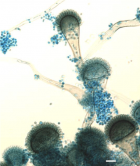
Figure 1

Figure 2

Figure 3
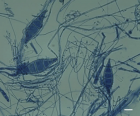
Figure 4
Similar Articles
-
Endothelial Repair and Endothelial Cell-Derived SecretomeAlexander E. Berezin*. Endothelial Repair and Endothelial Cell-Derived Secretome . . 2017 doi: 0.29328/journal.hjbm.1001001; 1: 001-008
-
Ethical Dimensions of Population Genetic Research in the CaucasusRamaz Shengelia*,Theodore G Schurr. Ethical Dimensions of Population Genetic Research in the Caucasus. . 2017 doi: 10.29328/journal.hjbm.1001002; 1: 009-015
-
Fungi present in home and their impact on human health-A short reviewMariusz Dyląg*. Fungi present in home and their impact on human health-A short review. . 2017 doi: 10.29328/journal.hjbm.1001003; 1: 016-025
-
Transglutaminase inhibition: possible therapeutic mechanisms to protect cells from death in neurological disordersVittorio Gentile*,Elenamaria Fioretti,Nicola Gaetano Gatta,Rosaria Romano. Transglutaminase inhibition: possible therapeutic mechanisms to protect cells from death in neurological disorders . . 2017 doi: 10.29328/journal.hjbm.1001004; 1: 026-038
-
Surface Plasmon Resonance technology to assess biological interactionsSilvia Bartollino*,Alessandro Medoro,Donatella Mignogna,,Erika di Zazzo,Bruno Moncharmont. Surface Plasmon Resonance technology to assess biological interactions . . 2017 doi: 10.29328/journal.hjbm.1001005; 1: 039-044
-
Use of MicroRNAs to Screen for Colon CancerFarid E Ahmed*,Nancy C Ahmed,Mostafa Gouda,Chris Bonnerup. Use of MicroRNAs to Screen for Colon Cancer . . 2017 doi: 10.29328/journal.hjbm.1001006; 1: 045-074
-
The master regulator gene PRDM2 controls C2C12 myoblasts proliferation and Differentiation switch and PRDM4 and PRDM10 expressionBartollino Silvia*,Di Zazzo Erika,Moncharmont Bruno. The master regulator gene PRDM2 controls C2C12 myoblasts proliferation and Differentiation switch and PRDM4 and PRDM10 expression. . 2017 doi: 10.29328/journal.hjbm.1001007; 1: 075-091
-
Maternal thyroid dysfunction and neonatal cardiac disordersAhmed RG*. Maternal thyroid dysfunction and neonatal cardiac disorders. . 2017 doi: 10.29328/journal.ibm.1001008; 1: 092-096
-
What can Mathematics say about unsolved problems in Medicine?Marco P Soares dos Santos*. What can Mathematics say about unsolved problems in Medicine? . . 2018 doi: 10.29328/journal.ibm.1001009; 2: 001-002
-
Erectile Dysfunction and Coronary Artery Disease: Two manifestations, one same underlying mechanismJonathan Cardona-Vélez*,Laura Ceballos-Naranjo . Erectile Dysfunction and Coronary Artery Disease: Two manifestations, one same underlying mechanism. . 2018 doi: 10.29328/journal.ibm.1001010; 2: 003-006
Recently Viewed
-
The Accuracy of pHH3 in Meningioma Grading: A Single Institution StudyMansouri Nada1, Yaiche Rahma*, Takout Khouloud, Gargouri Faten, Tlili Karima, Rachdi Mohamed Amine, Ammar Hichem, Yedeas Dahmani, Radhouane Khaled, Chkili Ridha, Msakni Issam, Laabidi Besma. The Accuracy of pHH3 in Meningioma Grading: A Single Institution Study. Arch Pathol Clin Res. 2024: doi: 10.29328/journal.apcr.1001041; 8: 006-011
-
Assessment of Perceptions of Nursing Undergraduates towards Mental Health PracticesAlya Algamdii*. Assessment of Perceptions of Nursing Undergraduates towards Mental Health Practices. Clin J Nurs Care Pract. 2025: doi: 10.29328/journal.cjncp.1001059; 9: 007-011
-
Multipurpose Antioxidants based on Food Industry Waste: Production and Properties EvaluationToshkhodjaev*. Multipurpose Antioxidants based on Food Industry Waste: Production and Properties Evaluation. Arch Food Nutr Sci. 2025: doi: 10.29328/journal.afns.1001062; 9: 001-003
-
Relationship between Fertility Diet Score Index Items and Ovulation in Women with Polycystic Ovary Syndrome: A Narrative ReviewHadis Alimoradi,Faezeh Mashhadi,Ava Hemmat,Mohsen Nematy,Maryam Khosravi,Maryam Emadzadeh,Nayere Khadem Ghaebi,Fatemeh Roudi*. Relationship between Fertility Diet Score Index Items and Ovulation in Women with Polycystic Ovary Syndrome: A Narrative Review. Arch Food Nutr Sci. 2024: doi: 10.29328/journal.afns.1001061; 8: 041-048
-
Evaluation of the LumiraDx SARS-CoV-2 antigen assay for large-scale population testing in SenegalMoustapha Mbow*,Ibrahima Diallo,Mamadou Diouf,Marouba Cissé#,Moctar Gningue#,Aminata Mboup,Nafissatou Leye,Gora Lo,Yacine Amet Dia,Abdou Padane,Djibril Wade,Josephine Khady Badiane,Oumar Diop,Aminata Dia,Ambroise Ahouidi,Doudou George Massar Niang,Babacar Mbengue,Maguette Dème Sylla Niang,Papa Alassane Diaw,Tandakha Ndiaye Dieye,Badara Cisé,El Hadj Mamadou Mbaye,Alioune Dieye,Souleymane Mboup. Evaluation of the LumiraDx SARS-CoV-2 antigen assay for large-scale population testing in Senegal. Int J Clin Virol. 2022: doi: 10.29328/journal.ijcv.1001041; 6: 001-006
Most Viewed
-
Feasibility study of magnetic sensing for detecting single-neuron action potentialsDenis Tonini,Kai Wu,Renata Saha,Jian-Ping Wang*. Feasibility study of magnetic sensing for detecting single-neuron action potentials. Ann Biomed Sci Eng. 2022 doi: 10.29328/journal.abse.1001018; 6: 019-029
-
Evaluation of In vitro and Ex vivo Models for Studying the Effectiveness of Vaginal Drug Systems in Controlling Microbe Infections: A Systematic ReviewMohammad Hossein Karami*, Majid Abdouss*, Mandana Karami. Evaluation of In vitro and Ex vivo Models for Studying the Effectiveness of Vaginal Drug Systems in Controlling Microbe Infections: A Systematic Review. Clin J Obstet Gynecol. 2023 doi: 10.29328/journal.cjog.1001151; 6: 201-215
-
Prospective Coronavirus Liver Effects: Available KnowledgeAvishek Mandal*. Prospective Coronavirus Liver Effects: Available Knowledge. Ann Clin Gastroenterol Hepatol. 2023 doi: 10.29328/journal.acgh.1001039; 7: 001-010
-
Causal Link between Human Blood Metabolites and Asthma: An Investigation Using Mendelian RandomizationYong-Qing Zhu, Xiao-Yan Meng, Jing-Hua Yang*. Causal Link between Human Blood Metabolites and Asthma: An Investigation Using Mendelian Randomization. Arch Asthma Allergy Immunol. 2023 doi: 10.29328/journal.aaai.1001032; 7: 012-022
-
An algorithm to safely manage oral food challenge in an office-based setting for children with multiple food allergiesNathalie Cottel,Aïcha Dieme,Véronique Orcel,Yannick Chantran,Mélisande Bourgoin-Heck,Jocelyne Just. An algorithm to safely manage oral food challenge in an office-based setting for children with multiple food allergies. Arch Asthma Allergy Immunol. 2021 doi: 10.29328/journal.aaai.1001027; 5: 030-037

HSPI: We're glad you're here. Please click "create a new Query" if you are a new visitor to our website and need further information from us.
If you are already a member of our network and need to keep track of any developments regarding a question you have already submitted, click "take me to my Query."






